Gorgias Islamic Studies spans a wide range of subject areas, seeking to understand Islam as a complete cultural and religious unity. This series draws together political, socio-cultural, textual, and historical approaches from across disciplines. Containing monographs, edited collections of essays, and primary source texts in translation, the series seeks to present a comprehensive, critical, and constructive picture of this centuries- and continent-spanning religion.
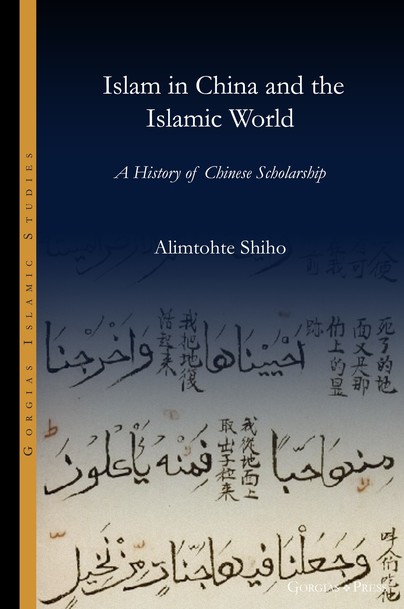
Format: Hardback
Pages: 257
ISBN: 9781463245870
Pub Date: 31 May 2024
Description:
Over the past half century, China has accomplished a great deal in the study of Islam, and established a certain academic system for its study. This book offers a history of contemporary Islamic research in China, analyzing the interdisciplinary research emerging from this system, from its background to the people involved, mechanisms, and their publications, scientific conferences, reference works and historical materials, and the branches of research: history, religion, philosophy, politics, and culture.
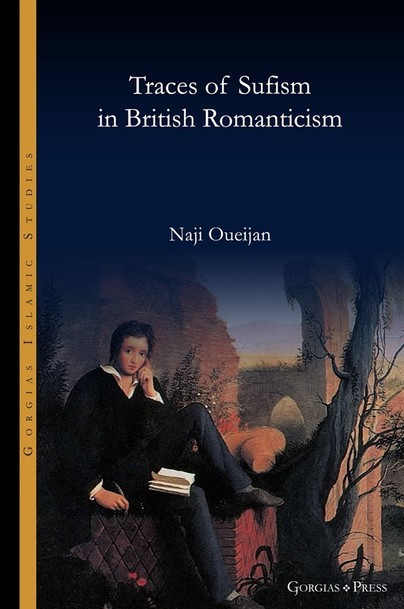
Format: Hardback
Pages: 310
ISBN: 9781463245528
Pub Date: 30 Jun 2023
Description:
This work argues that there are traces of Sufism to be found in British Romanticism. Most scholars of Romanticism have overlooked the impact of Sufism on Romanticism in favour of Christian and neo-Platonic Mysticism, but this work fills in this gap by showing the magnitude of the influence of Sufism on the Romantics without negating the influence of other -isms. What elements of Sufism attracted the attention of the Romantics?
And why were the Romantics attracted more to Sufism and Sufi poets than to Christian Mysticism and Mystic poets?
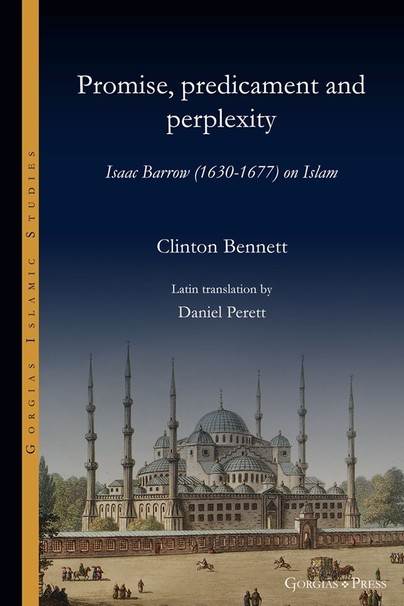
Format: Paperback
Pages: 86
ISBN: 9781463207021
Pub Date: 23 Mar 2022
Description:
This book is a study of the contribution of Isaac Barrow (1630-1677), Master of Trinity College (Cambridge), to Western perceptions of Islam in the 17th century. In particular, it provides a translation and study of Barrow's Latin essay on Islam (written in Constantinople), a Sermon on Islam and several other works that set out an embryonic theory of religion.
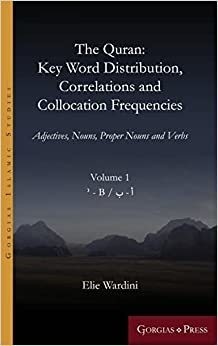
Format: Hardback
Pages: 516
ISBN: 9781463244149
Pub Date: 31 Jan 2022
Description:
The Quran: Key Word Distribution, Correlations and Collocation Frequencies presents key data related to the lexicon of the Quran, in terms of Key Word distribution and lexical associations. The digital text used for this purpose is the Uthmani text of the Tanzil Quran Text. This text is widely used.
All vocalized Arabic text is quoted unaltered in any shape or form from the Tanzil text. Unvocalized Arabic text and transcriptions are my own. In this series, each Key Word – here adjectives, nouns, proper nouns and verbs – is presented together with the following key data: degree of concentration, weighted distribution, correlations and collocation frequencies. The Key Words are always referenced by their lemma and are sorted alphabetically according to Arabic and UNICODE order. In lemmatizing the words, no attention has been given to the semantics of each word. Only on rare occasion have similar forms of words or proper nouns been separated in order to avoid confusion. In assigning each word a lemma, classical dictionaries and Quran commentaries, as well as modern Quran dictionaries have been consulted. Deciding on these is not always obvious, since classical dictionaries and commentaries sometimes either disagree or present divergent variant readings or root and lemma attributions. This series contributes to Computational Linguistics and Digital Humanities in general, and Computational Linguistics research on the Quran in particular.
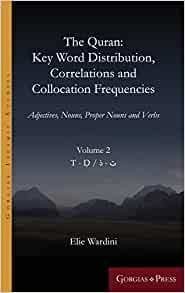
Format: Hardback
Pages: 404
ISBN: 9781463244163
Pub Date: 31 Jan 2022
Description:
The Quran: Key Word Distribution, Correlations and Collocation Frequencies presents key data related to the lexicon of the Quran, in terms of Key Word distribution and lexical associations. The digital text used for this purpose is the Uthmani text of the Tanzil Quran Text. This text is widely used.
All vocalized Arabic text is quoted unaltered in any shape or form from the Tanzil text. Unvocalized Arabic text and transcriptions are my own. In this series, each Key Word – here adjectives, nouns, proper nouns and verbs – is presented together with the following key data: degree of concentration, weighted distribution, correlations and collocation frequencies. The Key Words are always referenced by their lemma and are sorted alphabetically according to Arabic and UNICODE order. In lemmatizing the words, no attention has been given to the semantics of each word. Only on rare occasion have similar forms of words or proper nouns been separated in order to avoid confusion. In assigning each word a lemma, Classical dictionaries and Quran commentaries, as well as modern Quran dictionaries have been consulted. Deciding on these is not always obvious, since classical dictionaries and commentaries sometimes either disagree or present divergent variant readings or root and lemma attributions. This series contributes to Computational Linguistics and Digital Humanities in general, and Computational Linguistics research on the Quran in particular.
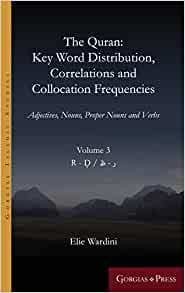
Format: Hardback
Pages: 406
ISBN: 9781463244187
Pub Date: 31 Jan 2022
Description:
The Quran: Key Word Distribution, Correlations and Collocation Frequencies presents key data related to the lexicon of the Quran, in terms of Key Word distribution and lexical associations. The digital text used for this purpose is the Uthmani text of the Tanzil Quran Text. This text is widely used.
All vocalized Arabic text is quoted unaltered in any shape or form from the Tanzil text. Unvocalized Arabic text and transcriptions are my own. In this series, each Key Word – here adjectives, nouns, proper nouns and verbs – is presented together with the following key data: degree of concentration, weighted distribution, correlations and collocation frequencies. The Key Words are always referenced by their lemma and are sorted alphabetically according to Arabic and UNICODE order. In lemmatizing the words, no attention has been given to the semantics of each word. Only on rare occasion have similar forms of words or proper nouns been separated in order to avoid confusion. In assigning each word a lemma, Classical dictionaries and Quran commentaries, as well as modern Quran dictionaries have been consulted. Deciding on these is not always obvious, since classical dictionaries and commentaries sometimes either disagree or present divergent variant readings or root and lemma attributions. This series contributes to Computational Linguistics and Digital Humanities in general, and Computational Linguistics research on the Quran in particular.
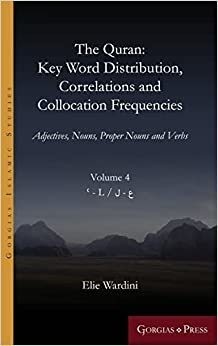
Format: Hardback
Pages: 440
ISBN: 9781463244200
Pub Date: 31 Jan 2022
Description:
The Quran: Key Word Distribution, Correlations and Collocation Frequencies presents key data related to the lexicon of the Quran, in terms of Key Word distribution and lexical associations. The digital text used for this purpose is the Uthmani text of the Tanzil Quran Text. This text is widely used.
All vocalized Arabic text is quoted unaltered in any shape or form from the Tanzil text. Unvocalized Arabic text and transcriptions are my own. In this series, each Key Word – here adjectives, nouns, proper nouns and verbs – is presented together with the following key data: degree of concentration, weighted distribution, correlations and collocation frequencies. The Key Words are always referenced by their lemma and are sorted alphabetically according to Arabic and UNICODE order. In lemmatizing the words, no attention has been given to the semantics of each word. Only on rare occasion have similar forms of words or proper nouns been separated in order to avoid confusion. In assigning each word a lemma, Classical dictionaries and Quran commentaries, as well as modern Quran dictionaries have been consulted. Deciding on these is not always obvious, since classical dictionaries and commentaries sometimes either disagree or present divergent variant readings or root and lemma attributions. This series contributes to Computational Linguistics and Digital Humanities in general, and Computational Linguistics research on the Quran in particular.
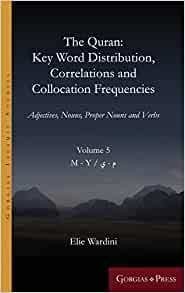
Format: Hardback
Pages: 482
ISBN: 9781463244224
Pub Date: 31 Jan 2022
Description:
Presented over 5 volumes (available separately), The Quran: Key Word Distribution, Correlations and Collocation Frequencies provides key data related to the lexicon of the Quran, in terms of Key Word distribution and lexical associations. The digital text used for this purpose is the widely-used Uthmani text of the Tanzil Quran Text. All vocalised Arabic text is quoted unaltered in any shape or form from the Tanzil text.
Unvocalised Arabic text and transcriptions are the author's own. In this series, each Key Word – here adjectives, nouns, proper nouns and verbs – is presented together with the following key data: degree of concentration, weighted distribution, and correlations and collocation frequencies. The Key Words are always referenced by their lemma and are sorted alphabetically according to Arabic and UNICODE order. In lemmatising the words, no attention has been given to the semantics of each word. Only on rare occasion have similar forms of words or proper nouns been separated in order to avoid confusion. In assigning each word a lemma, the author has consulted classical dictionaries and Quran commentaries, as well as modern Quran dictionaries.
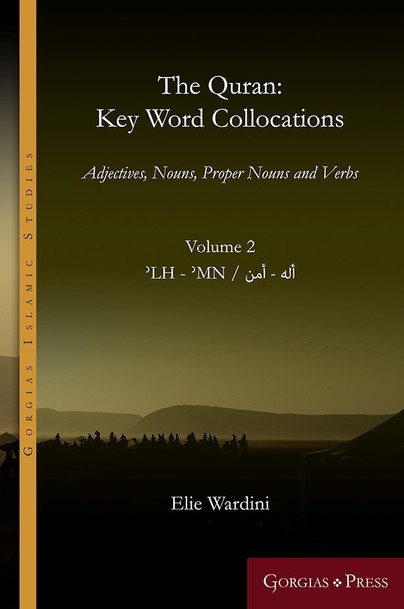
Format: Hardback
Pages: 544
ISBN: 9781463242992
Pub Date: 28 Feb 2021
Description:
The aim with the present series, The Quran: Key Word Collocations is to present the Quran as raw data with as little interpretation as possible. The digital text used for this purpose is the Uthmani text of the Tanzil Quran Text. In the present series, Collocation is defined as a Key Word, here adjectives, nouns, proper nouns and verbs, forming the center of a cluster with four co-occurring Key Words (1° and 2° of proximity), the first two to the left and to the right, where available.
Every Collocation of each Key Word in the Quran is presented in context, as a rule with six words to the right and six to the left of it, where available or where the formatting permits. The central Key Words have been grouped by root > lemma. Classical dictionaries and Quran commentaries, as well as modern Quran dictionaries have been consulted.
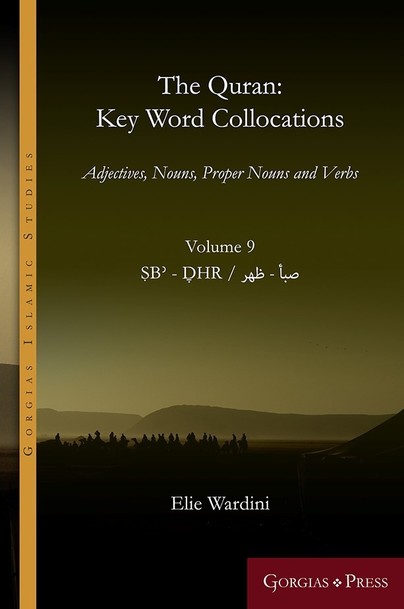
Format: Hardback
Pages: 482
ISBN: 9781463243135
Pub Date: 28 Feb 2021
Description:
The aim with the present series, The Quran: Key Word Collocations is to present the Quran as raw data with as little interpretation as possible. The digital text used for this purpose is the Uthmani text of the Tanzil Quran Text. In the present series, Collocation is defined as a Key Word, here adjectives, nouns, proper nouns and verbs, forming the center of a cluster with four co-occurring Key Words (1° and 2° of proximity), the first two to the left and to the right, where available.
Every Collocation of each Key Word in the Quran is presented in context, as a rule with six words to the right and six to the left of it, where available or where the formatting permits. The central Key Words have been grouped by root > lemma. Classical dictionaries and Quran commentaries, as well as modern Quran dictionaries have been consulted.
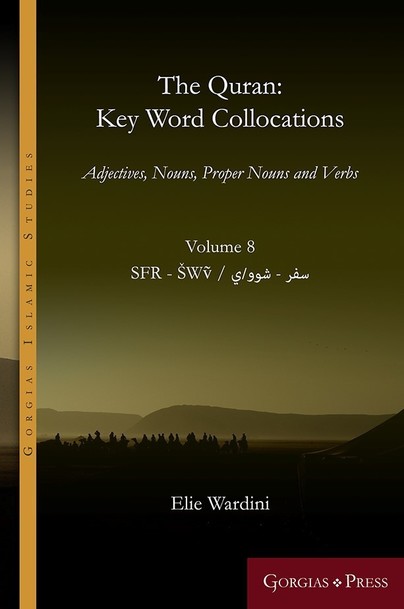
Format: Hardback
Pages: 518
ISBN: 9781463243111
Pub Date: 28 Feb 2021
Description:
The aim with the present series, The Quran: Key Word Collocations is to present the Quran as raw data with as little interpretation as possible. The digital text used for this purpose is the Uthmani text of the Tanzil Quran Text. In the present series, Collocation is defined as a Key Word, here adjectives, nouns, proper nouns and verbs, forming the center of a cluster with four co-occurring Key Words (1° and 2° of proximity), the first two to the left and to the right, where available.
Every Collocation of each Key Word in the Quran is presented in context, as a rule with six words to the right and six to the left of it, where available or where the formatting permits. The central Key Words have been grouped by root > lemma. Classical dictionaries and Quran commentaries, as well as modern Quran dictionaries have been consulted.
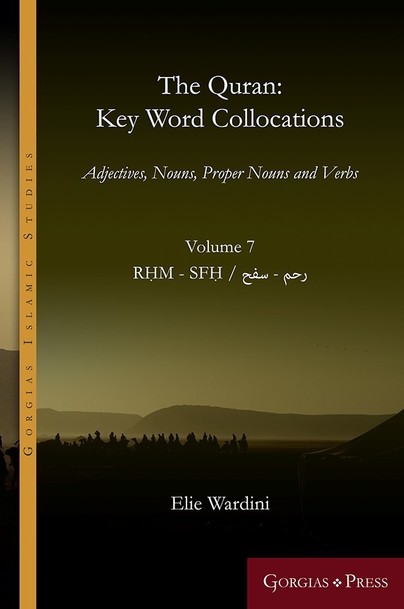
Format: Hardback
Pages: 534
ISBN: 9781463243098
Pub Date: 28 Feb 2021
Description:
The aim with the present series, The Quran: Key Word Collocations is to present the Quran as raw data with as little interpretation as possible. The digital text used for this purpose is the Uthmani text of the Tanzil Quran Text. In the present series, Collocation is defined as a Key Word, here adjectives, nouns, proper nouns and verbs, forming the center of a cluster with four co-occurring Key Words (1° and 2° of proximity), the first two to the left and to the right, where available.
Every Collocation of each Key Word in the Quran is presented in context, as a rule with six words to the right and six to the left of it, where available or where the formatting permits. The central Key Words have been grouped by root > lemma. Classical dictionaries and Quran commentaries, as well as modern Quran dictionaries have been consulted.
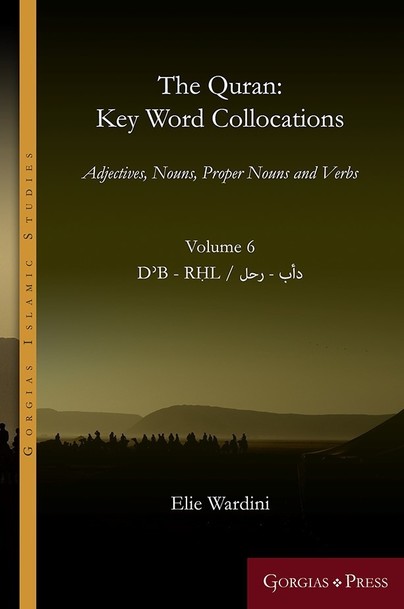
Format: Hardback
Pages: 510
ISBN: 9781463243074
Pub Date: 28 Feb 2021
Description:
The aim with the present series, The Quran: Key Word Collocations is to present the Quran as raw data with as little interpretation as possible. The digital text used for this purpose is the Uthmani text of the Tanzil Quran Text. In the present series, Collocation is defined as a Key Word, here adjectives, nouns, proper nouns and verbs, forming the center of a cluster with four co-occurring Key Words (1° and 2° of proximity), the first two to the left and to the right, where available.
Every Collocation of each Key Word in the Quran is presented in context, as a rule with six words to the right and six to the left of it, where available or where the formatting permits. The central Key Words have been grouped by root > lemma. Classical dictionaries and Quran commentaries, as well as modern Quran dictionaries have been consulted.
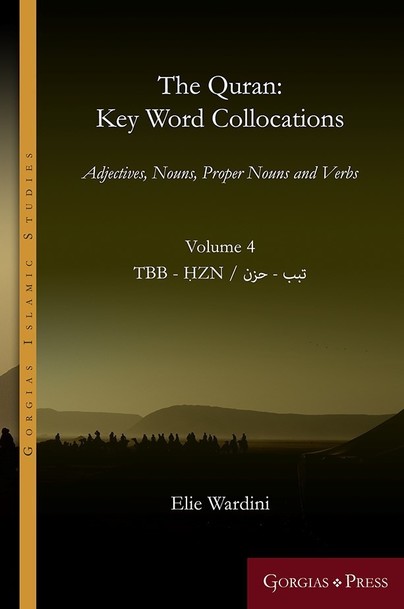
Format: Hardback
Pages: 528
ISBN: 9781463243036
Pub Date: 28 Feb 2021
Description:
The aim with the present series, The Quran: Key Word Collocations is to present the Quran as raw data with as little interpretation as possible. The digital text used for this purpose is the Uthmani text of the Tanzil Quran Text. In the present series, Collocation is defined as a Key Word, here adjectives, nouns, proper nouns and verbs, forming the center of a cluster with four co-occurring Key Words (1° and 2° of proximity), the first two to the left and to the right, where available.
Every Collocation of each Key Word in the Quran is presented in context, as a rule with six words to the right and six to the left of it, where available or where the formatting permits. The central Key Words have been grouped by root > lemma. Classical dictionaries and Quran commentaries, as well as modern Quran dictionaries have been consulted.
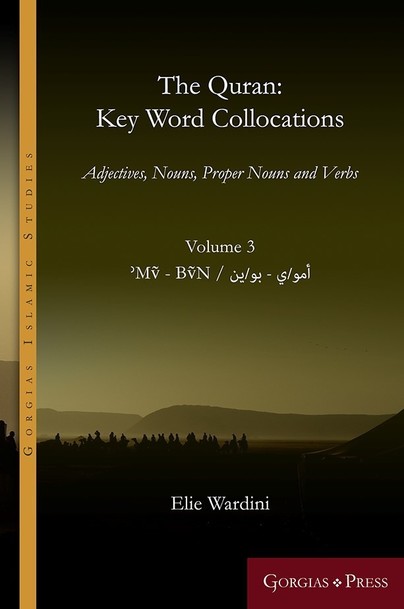
Format: Hardback
Pages: 556
ISBN: 9781463243012
Pub Date: 28 Feb 2021
Description:
The aim with the present series, The Quran: Key Word Collocations is to present the Quran as raw data with as little interpretation as possible. The digital text used for this purpose is the Uthmani text of the Tanzil Quran Text. In the present series, Collocation is defined as a Key Word, here adjectives, nouns, proper nouns and verbs, forming the center of a cluster with four co-occurring Key Words (1° and 2° of proximity), the first two to the left and to the right, where available.
Every Collocation of each Key Word in the Quran is presented in context, as a rule with six words to the right and six to the left of it, where available or where the formatting permits. The central Key Words have been grouped by root > lemma. Classical dictionaries and Quran commentaries, as well as modern Quran dictionaries have been consulted.
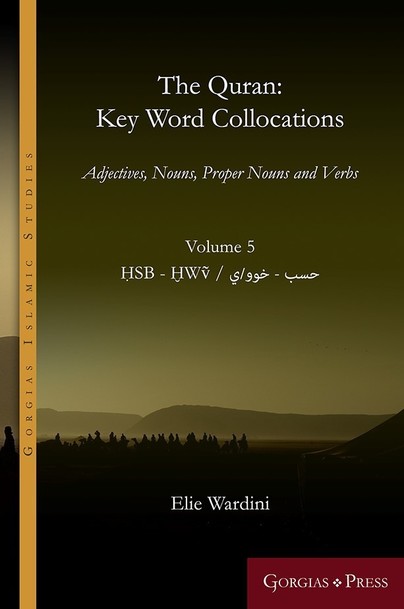
Format: Hardback
Pages: 548
ISBN: 9781463243050
Pub Date: 28 Feb 2021
Description:
The aim with the present series, The Quran: Key Word Collocations is to present the Quran as raw data with as little interpretation as possible. The digital text used for this purpose is the Uthmani text of the Tanzil Quran Text. In the present series, Collocation is defined as a Key Word, here adjectives, nouns, proper nouns and verbs, forming the center of a cluster with four co-occurring Key Words (1° and 2° of proximity), the first two to the left and to the right, where available.
Every Collocation of each Key Word in the Quran is presented in context, as a rule with six words to the right and six to the left of it, where available or where the formatting permits. The central Key Words have been grouped by root > lemma. Classical dictionaries and Quran commentaries, as well as modern Quran dictionaries have been consulted.
















